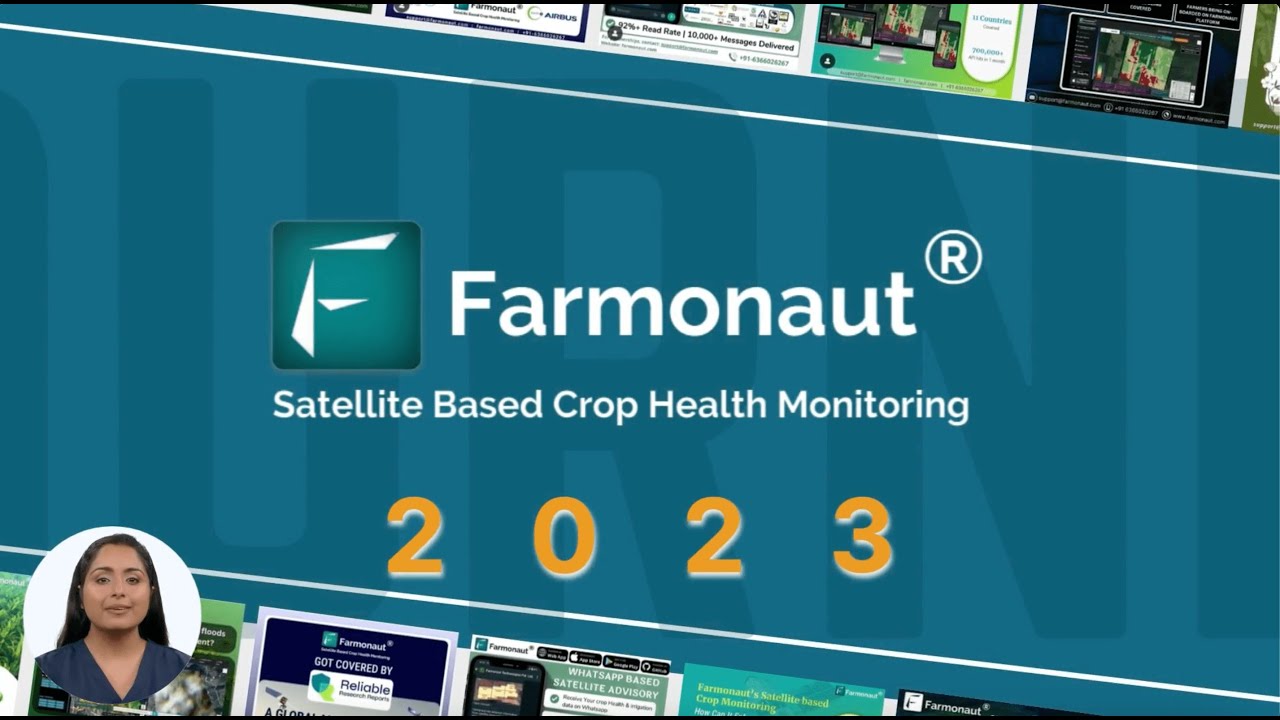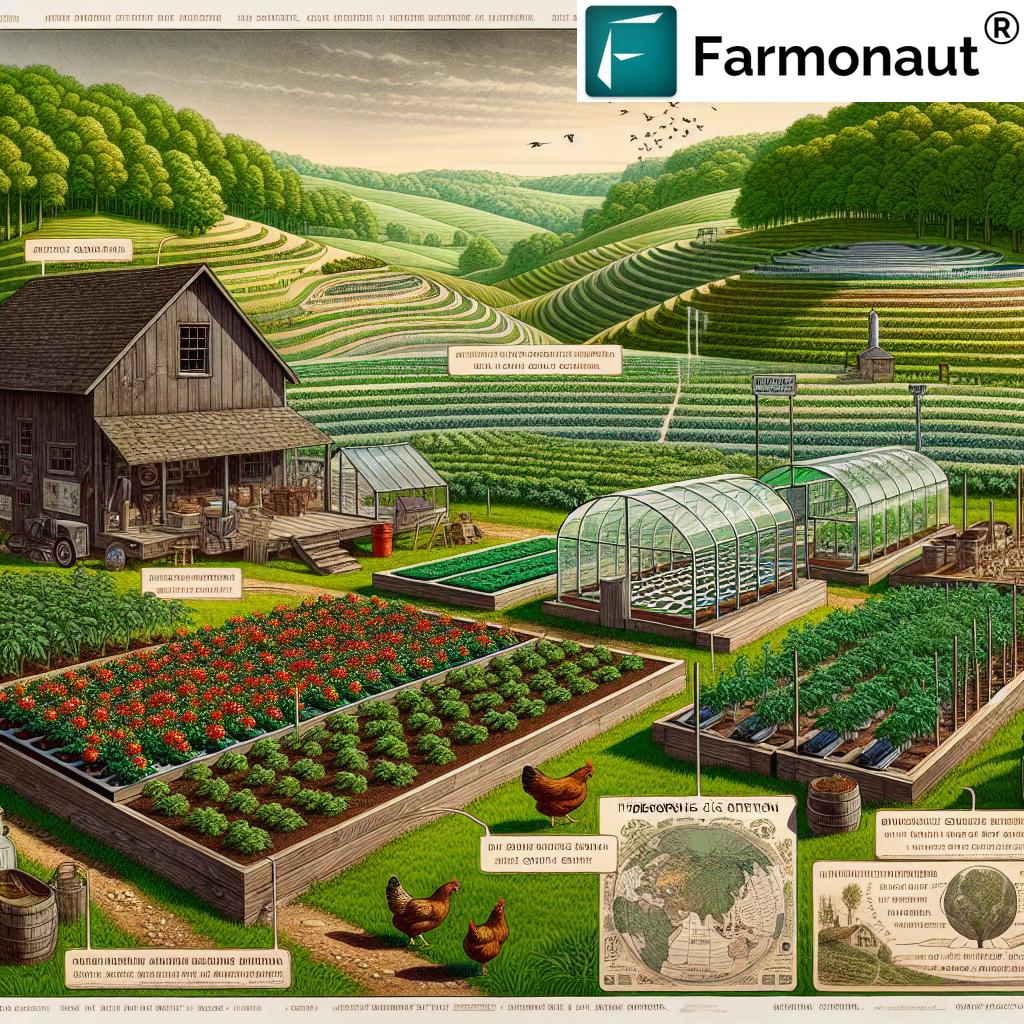Kekaha Soil Sampling: 5 Powerful Steps for Brownfields Cleanup
- Introduction: Environmental Cleanup in Kekaha
- Understanding Brownfields and the EPA Funded Assessment
- The Importance of Kekaha Soil Sampling
- 5 Powerful Steps for Kekaha Soil Sampling & Brownfields Cleanup
- Summary Table: Soil Contaminants & EPA Assessment Outcomes
- Role of Advanced Technology in Sustainable Soil Management
- FAQ
- Conclusion & Next Steps
Introduction: Environmental Cleanup in Kekaha
Kekaha, a vibrant community on the island of Kaua‘i, holds a rich history as a center for agricultural production and sugar mill operations. Today, we stand at a crossroads, as the former Kekaha Sugar Mill – specifically Lot B property – transitions from its industrial past toward a future of sustainable property reuse. At the heart of this transformation is the process of Kekaha soil sampling, backed by a $300,000 EPA Brownfields Assessment Grant awarded to the county Office of Economic Development.
Understanding and addressing soil contamination is critical for our environmental cleanup project in Kekaha. With the support of the Environmental Protection Agency (EPA) grant, we can assess, evaluate, and devise safe, innovative methods for brownfields cleanup and future development. This comprehensive blog post explores the entire journey – from the rationale behind soil assessment to practical steps and cutting-edge technology, helping us support property owners, contractors, and the whole Kekaha community.
Understanding Brownfields and the EPA Funded Soil Assessment
Before we explore the powerful steps of Kekaha soil sampling, it’s essential to contextualize what brownfields are and how EPA-funded soil assessment supports community well-being and property reuse.
What are Brownfields?
Brownfields are properties where future use may be complicated by the presence, or potential presence, of hazardous substances, pollutants, or contaminants. In Kekaha, these concerns typically stem from the site’s history, such as the processing and storage of materials at the sugar mill. Assessing these potentially contaminated properties is the first critical step in planning for safe, sustainable redevelopment.
The U.S. Environmental Protection Agency (EPA) supports communities through brownfields assessment grants. This funding is crucial for local agencies like Kaua‘i’s Office of Economic Development to:
- Assess and evaluate contaminated land and soil within Lot B property and similar sites,
- Identify the type and extent of contamination present,
- Determine what cleanup or remediation may be necessary,
- Support property reuse planning that protects human health and the environment.
EPA Funded Soil Assessment: Key to Safe Community Development
In the case of Kekaha, the EPA Brownfields Assessment Grant enables soil sampling and thorough evaluation within the property bounded by Kekaha Road to the north, Hale Lio Street to the east, Kopaa Street to the south, and Lot A of the Sugar Mill. The process involves careful planning, community engagement, expert contractors, and data-driven analysis to decide which cleanup methods are necessary for the site’s future.
The Importance of Kekaha Soil Sampling for Environmental Cleanup
Soil sampling is the scientific backbone of every environmental cleanup project, especially in the context of Kekaha’s brownfields. Here’s why soil contamination evaluation is pivotal for our community, property owners, and the future of Lot B:
- Clarity on Contaminants: Regular Kekaha soil sampling identifies if contaminants such as heavy metals or legacy chemicals are present and determines their concentrations. This knowledge is required to address public health risks and adhere to EPA cleanup standards.
- Data-Driven Cleanup: The results of soil assessment inform which cleanup methods (remediation, removal, capping, etc.) are best suited for the specific site, ensuring that resources are used efficiently.
- Property Reuse: Before any property reuse planning or redevelopment can take place, it’s essential to guarantee soil is safe for future users—be it for agricultural, community, or commercial purposes.
- Compliance with Law: EPA funded soil assessment ensures the county Office of Economic Development complies with federal and state environmental protection laws.
- Community Well-being: Soil sampling protects the health of nearby residents by identifying and addressing any environmental hazards before reuse.
The combination of advanced scientific methods and community foresight ensures Kekaha’s brownfields cleanup project will result in safe, sustainable property reuse for generations to come. Let’s guide you through each step of the process.
5 Powerful Steps for Kekaha Soil Sampling & Brownfields Cleanup
Each brownfields cleanup initiative in Kekaha is built on a transparent, five-step methodology. The Kekaha soil sampling and EPA assessment not only guarantee that environmental protection is prioritized but also that community and future development needs are addressed.
Step 1: Preparation & Planning – Setting the Stage for the Environmental Cleanup Project
The first phase of the Lot B property soil testing project involves comprehensive planning. This step sets a strong foundation for success across all subsequent activities.
- Site Review: Contractors and the county Office of Economic Development assess property records, past land uses, aerial maps, and known contaminant sources. This involves identifying historical activities at the former Kekaha Sugar Mill site and compiling all available documentation.
- Permission from Owner: Soil sampling is only initiated with the permission of the current property owner (Aloun Farms in this case), ensuring transparency and respect.
- Defining the Sampling Zone: The specific boundaries for the soil assessment include highways and roads like Kekaha Road (north), Hale Lio Street (east), Kopaa Street (south), and adjacent Lot A of the sugar mill. This ensures that all high-risk parcels are systematically included.
- Selecting Contractors and Tools: The work is conducted using compact, direct-push drilling rigs and support vehicles chosen for their ability to minimize disturbance to nearby residents.
- Scheduling: Sampling dates are established (e.g., Monday, April 21 – Friday, May 2 with tentative or extended timelines dependent on need), maximizing team efficiency and minimizing disruption.
Thorough preparation ensures that every soil sample taken is as representative and reliable as possible.
Step 2: Community Engagement & Regulatory Compliance
No environmental cleanup project succeeds without community trust and regulatory adherence. In Kekaha’s case:
- Notifying Residents and Stakeholders: Advance notice is provided to nearby residents about activity on the Lot B property, including potential noise or vehicle presence during the sampling period.
- Providing Contact Information: Residents can contact Ana Española at the county for more information, and to make special requests for accommodations or alternate formats (e.g., large print, Braille, or electronic copy).
- Accommodating Disabilities: Special services, interpreters for non-English-speaking persons, and alternate notifications are available as soon as possible to fulfill diverse needs.
- Compliance: The entire project abides by Environmental Protection Agency and state guidelines, from sampling protocols to disposal of contaminated materials.
This step solidifies community support and ensures that every action respects both people and environmental laws.
Step 3: Soil Sampling Execution – The Heart of Contaminated Land Evaluation
The actual Kekaha soil sampling takes place over a concise two-week period, with dates subject to tentativeness or extension as needed for coverage.
- Site Mobilization: Contractors prepare the Lot B property, marking sampling points across grids to ensure even coverage throughout the area surrounded by Kekaha Road, Hale Lio Street, Kopaa Street, and Lot A.
- Sampling Methods: Teams utilize direct-push drilling rigs to extract soil at various depths, collecting cores without significant surface disruption.
- Support Vehicles and Equipment: Small vehicles support drilling teams, while care is taken to limit noise and disturbance for nearby residents during the short sampling period.
- Quality Control: Each soil sample is logged, labeled by location and depth, transported securely, and documented for laboratory analysis.
Effective sampling is a blend of precise science, technical expertise, and respect for the Kekaha community.
Step 4: Analyzing Soil Sampling Results and Risk Evaluation
After collection, soil samples from Kekaha’s Lot B property undergo laboratory testing. This phase provides critical data to drive brownfields cleanup support.
- Contaminant Detection: Labs screen for heavy metals (e.g., lead, arsenic), industrial chemicals, and possible pesticide residues from the site’s history as a sugar mill.
- Measuring Concentration: Each result is compared against EPA intervention thresholds designed to protect health and the environment.
- Evaluating Cleanup Necessity: Any detected contaminant above regulatory levels triggers discussions on remedial action.
- Transparency: Results are ultimately shared with the county, property owners, the community, and posted to the official project website.
Step 5: Brownfields Cleanup Support & Sustainable Property Reuse Planning
With analytical data in hand, the county Office of Economic Development can enact targeted environmental cleanup strategies, supported by the EPA grant.
- Remedial Action Plan: Cleanup methods are matched to contaminants, ensuring the use of best practices for removal, capping, or containment.
- Brownfields Cleanup Support: Guidance is provided to the property owner and future developers to address contamination and restore land utility safely.
- Property Reuse Planning: With soil suitability confirmed, detailed plans for redevelopment (e.g., community gardens, commercial buildings, or natural areas) are developed in line with environmental safety.
- Ongoing Monitoring: Some sites may require continued soil monitoring to ensure long-term safety and compliance.
These steps empower Kekaha’s future, transforming a symbol of the past into a sustainable resource for the community.
Explore Farmonaut’s API |
API Developer Docs
For those involved in large-scale soil and land management projects, Farmonaut’s Large Scale Farm Management Tool offers robust features for regular monitoring, reporting, and resource planning across extended properties.
If your goal is to make your farm or agribusiness more sustainable and reduce environmental impact, Farmonaut’s Carbon Footprinting service helps you monitor, analyze, and minimize greenhouse gas emissions – a crucial step in today’s agriculture.
Summary Table: Soil Contaminants & EPA Assessment Outcomes
The following table presents a hypothetical summary, drawing from typical brownfields soil assessments and EPA risk evaluation frameworks. In practice, results for the Kekaha Lot B property will be shared publicly as available.
| Sampling Site | Estimated Contaminant Detected | Estimated Concentration (mg/kg) | EPA Intervention Threshold | Cleanup Recommendation | Reuse Suitability |
|---|---|---|---|---|---|
| Lot B – North Grid | Lead | 340 | 400 | Monitor, No Immediate Cleanup | Suitable for Agriculture |
| Lot B – Central Grid | Arsenic | 23 | 20 | Soil Blending or Removal | Restricted Use |
| Lot B – East Parcel | Hydrocarbon | 85 | 100 | Monitor Annually | Suitable with Monitoring |
| Lot B – South Corner | Pesticide Residue | 7 | 10 | No Action Required | Suitable for All Uses |
| Lot B – West Edge | Mercury | 2 | 1 | Focused Soil Excavation | Restricted – No Agriculture |
(For illustration; actual site results will be updated on the official project website.)
Role of Advanced Technology in Sustainable Soil Management
As part of the commitment to sustainability, innovative tools are transforming how we approach soil sampling, resource management, and brownfields cleanup support. Precision technologies enable ongoing, non-invasive assessment—critical in communities like Kekaha considering their legacy and future.
Satellite-Based Monitoring and Digital Traceability
Organizations now leverage powerful digital platforms, such as Farmonaut, to monitor crop health, analyze soil conditions, and support transparency in agricultural and land assessment processes using satellite imagery. Key benefits include:
- Real-Time Crop and Soil Data: Multispectral satellite imagery uncovers trends in soil disturbance, moisture, and vegetation health—useful for immediate post-cleanup monitoring and ongoing agricultural use.
- Blockchain Traceability: Robust, tamper-proof records allow for end-to-end tracking of property remediation and agricultural products, supporting compliance and public trust. Learn more about traceability solutions
- Resource Optimization: Fleet monitoring tools help manage the movement of sampling rigs, support vehicles, and equipment, ensuring projects are efficient and cost-effective. Discover how Fleet Management supports large-scale operations.
- Environmental Impact: For farms and agri-projects included in property reuse, services such as Farmonaut Carbon Footprinting provide actionable data to reduce emissions and meet environmental standards.
- Crop Loan & Insurance Verification: In agricultural reuse, satellite-based verification streamlines crop insurance applications and reduces fraud. Read about Crop Loan and Insurance solutions for property owners and tenants.
Smart technology adoption ensures that as we restore Kekaha’s brownfields, we also lay the groundwork for ongoing sustainable land management, supporting the long-term health of our environment, economy, and community.
Frequently Asked Questions – Kekaha Soil Sampling & Brownfields Cleanup
1. What is the purpose of Kekaha soil sampling?
The primary goal of Kekaha soil sampling is to identify and evaluate any contamination present in the Lot B property, prior to redevelopment or reuse. This assessment, funded by the EPA Brownfields Assessment Grant, guides the county’s decisions on required cleanup, ensuring safety for future property use.
2. Who oversees and conducts the soil sampling work in Kekaha?
The soil sampling project is managed by the county Office of Economic Development in partnership with qualified contractors. All activity is carefully regulated and takes place with the property owner’s permission and community notice.
3. What happens if soil contamination is found?
If contamination is discovered above EPA intervention thresholds, a tailored environmental cleanup project is developed. Cleanup methods can include soil removal, capping, blending, or ongoing monitoring, depending on the contaminant type and concentration.
4. How can residents stay informed or request special accommodations?
Residents can contact Ana Española at 808-241-1969 or aespanola@kauai.gov for more information or to request auxiliary aids or accommodation due to disability, including large print, Braille, or electronic copy formats, and interpreter services for non-English-speaking persons.
5. Where can I see or track project updates?
Ongoing updates, notices, and final soil assessment results will be published on the project website here.
6. What role does technology play in ongoing land management?
Advanced tools like Farmonaut harness satellite imagery and AI to monitor restored areas for crop health, soil moisture, and environmental compliance long after initial cleanup—fostering sustainable reuse and adaptation.
Interested in affordable, real-time satellite monitoring and advisory for your land or business?
Explore flexible Farmonaut subscription plans below:
Conclusion & Next Steps: Building a Safe and Sustainable Kekaha
The Kekaha soil sampling project represents more than just technical work—it’s a collective investment in the health, resilience, and prosperity of our community. By leveraging EPA-funded soil assessments, cutting-edge environmental cleanup strategies, and modern digital tools, we ensure that the land emerging from its industrial legacy can be a safe, sustainable asset for future generations.
- For Residents: Stay engaged, review updates on the official project website, and reach out for accommodations as needed.
- For Property Owners & Developers: Work closely with the county to ensure all necessary cleanup methods are in place prior to reuse, following EPA and state protocols.
- For the Community: Recognize the value in both responsible remediation and the ongoing monitoring that technology like Farmonaut brings to the table.
Let’s work together—across public agencies, property owners, and residents—to ensure Kekaha thrives as a model of brownfields cleanup, environmental stewardship, and sustainable property reuse.
For more information, visit the Kekaha Brownfields Study project website or contact Ana Española at aespanola@kauai.gov, 808-241-1969. If you need accommodation due to a disability, auxiliary aid/service, or an interpreter, requests made early will allow adequate time to fulfill your request. This notice is available in alternate formats including large print, Braille, or electronic copy upon request.






















